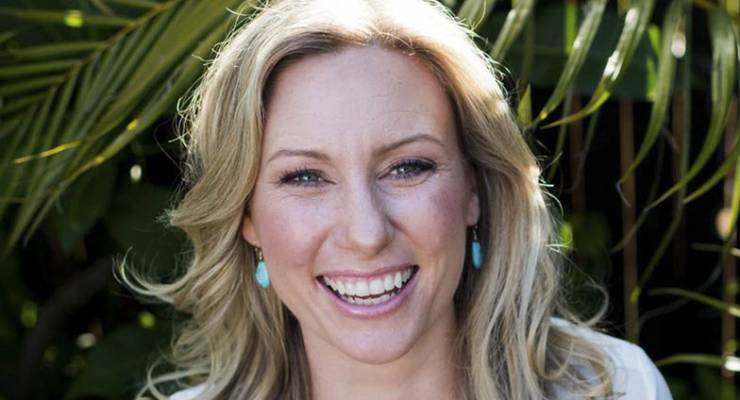
Australian Justine Damond is just one of a dispiritingly long list of unarmed civilians killed by the police in America. The issue came to national (and international) prominence after the 2014 shooting of teenager Michael Brown in Ferguson, Missouri, which was a catalysing event for the Black Lives Matter movement. Three years later, the response from public officials in Minneapolis is different to those in Ferguson. Minneapolis mayor Betsy Hodges has already faced the criticism that she has shown more sympathy for the victim than in other cases involving black civilians. Hodges says she has listened to the community and learned from her previous mistakes.
Damond’s death come a month after Jeronimo Yanez a Minnesota police officer who shot and killed black civilian Philando Castile in July 2016, was acquitted on all charges. Looking back over the three cases, have lessons been learned, or is a white, female victim treated differently?
The shootings and the the identification of officers
Justine Damond
July 15, 2017: Mohamed Noor, a Somali-American Minneapolis police officer, shoots and kills unarmed Australian woman Justine Damond (nee Ruszczyk), who had made a call to 911 about a woman Damond feared was being assaulted near her home. On July 17, “multiple sources” confirm Noor was the officer who fired the fatal shots, as well as the fact that he is facing several other complaints.
Michael Brown
August 9, 2014: Officer Darren Wilson of the Saint Louis police department shoots and kills unarmed black teenager Michael Brown. On August 12, Ferguson chief of police Thomas Jackson announces he will not release the name of the police officer involved because of concerns about the officer’s safety, saying “the value of releasing the name is far outweighed by the risk of harm to the officer and his family”. Following public pressure, Jackson relents on August 15 and identifies the officer as Darren Wilson, a “six-year veteran of the force who has no disciplinary actions on his record with the department”. The announcement of Wilson’s name is accompanied by the release of a surveillance video — in the face of opposition from the Department of Justice — purporting to show Michael Brown robbing a store shortly before he was shot and killed. Brown’s family call it “character assassination” and “a smear campaign”.
Philando Castile
July 6, 2016: St Anthony police officer Jeronimo Yanez shoots at Philando Castile seven times (five bullets hit him) during a traffic stop, after Castile informed him that he was in possession of a legal, licensed firearm. In dashcam footage of the shooting, not released until nearly a year later, Yanez is heard shouting “Don’t reach for it” and Castile is heard denying that he is. Forty seconds elapsed between the car being pulled over and the start of the shooting. Yanez is identified by the St Anthony police the next day on July 7.
Statements by the officer
Mohamed Noor
Two days after Damond is killed, on July 18, a statement from Noor’s legal team is released: “Officer Noor extends his condolences to the family and anyone else who has been touched by this event, he takes their loss seriously and keeps them in his daily thoughts and prayers.”
Darren Wilson
Terrence McCoy, writing in The Sydney Morning Herald on November 9, 2014:
“In the months since, Wilson — a tall man, nearly 193 centimetres, with soft, doughy features — was absent from public view while his name became famous. He skipped out on a court appearance. No one in his family spoke on his behalf. His lawyers ignored requests for comment. Even Ferguson’s police chief said he hadn’t spoken to Wilson since Brown’s killing.
November 25, 2014: The same day that a grand jury finds Wilson has no charges to answer, Wilson makes his first public statement — three months and 16 days after he killed Michael Brown — through his legal team. It makes no mention of Brown or his family. On the same day an exclusive interview between ABC’s George Stephanopoulos and Wilson is released, wherein he gives his first public detailing of his version of the events the events of August 9.
Jeronimo Yanez
On July 9, 3 days after Castile’s death, Minneapolis attorney Thomas Kelly issues the first public statement on behalf of Yanez, telling Associated Press “the actions of the driver” caused the shooting. “This had nothing to do with race. This had everything to do with the presence of a gun.”
Backgrounding and official implications of blame
Mohamed Noor
July 20: Cameron Stewart reports in The Australian:
“As Officer Noor’s chequered police career is exposed, his problems have intensified, with the police officer in the car with him on the night he killed Ms Ruszczyk giving damning testimony against him.
“Officer Mathew Harrity has told investigators Mr Noor shot Ms Ruszczyk immediately and without warning as she approached their police car late on Saturday night. The officer said that in the seconds before Ms Ruszczyk approached them they heard a ‘loud sound’ but gave no explanation of what it was.”
In a blog post on July 20, mayor Betsy Hodges strongly suggests Noor is guilty of misconduct: “While the investigation is not yet complete, based on the facts publicly released on Tuesday night, the fatal shooting of Justine Damond should not have happened.” The sentiment is backed up by Minneapolis Police chief Janee Harteau at a press conference on July 21.
“Justine didn’t have to die … I believe the actions in question go against who we are as a department, how we train and the expectations we have for our officers. On our squad cars you will find the words, ‘To protect with courage and serve with compassion’. This did not happen.”
Darren Wilson
In the months between the killing of Michael Brown and Darren Wilson’s acquittal there were no official calls for him to make a statement. The police force made no statements to the media, on or off the record, regarding the likelihood of impropriety on Wilson’s part.
Jeronimo Yanez
July 7: Minnesota Governor Mark Dayton is swift to condemn the shooting of Castile, saying the morning after it happened that “this kind of behavior is unacceptable”. He also confronts the role race seemed to have played in the incident: “Would this have happened if those passengers, the driver and the passengers were white? I don’t think it would have.”
A month later on August 17, as Yanez prepares to return to work, St Athony police chief John Mangseth is far less emphatic than Dayton, speaking sympathetically about Yanez’s family, and describing him as an “intelligent” and “level-headed” person with a great reputation within the force. He refuses to speculate on whether he should be charged or exonerated.
Resignations and firings
Minneapolis Police Chief Jannee Harteau resigns on July 22 2017, a week after Damond’s death.
On November 30, 2014, five days after being acquitted of all charges, Wilson resigns from the police force. In March 2015, Ferguson Police chief Thomas Jackson is forced to resign after a scathing report from the Department of Justice finds the Ferguson Police force rife with “entrenched racism” and “unlawful and unconstitutional practices”. It is seven months and four days after the death of Michael Brown.
Jeronimo Yanez is acquitted of all charges on June 16, 2017. He is fired the same day.
Given the numbing list of black victims of police violence in America in the past five years — and the last 10, the last 50 and on and on and on — it’s perhaps understandable that to some the death of a white woman in similar circumstances has brought about more sympathetic media coverage and swifter official action. But the timelines regarding the official response in the Castile case are comparable to (in some case quicker than) those relating to Damond, and the response implies some lessons have been learnt since the Michael Brown case. It remains to be seen whether the primary defence available to Yanez — and to Wilson, the killers of Tamir Rice, Walter Scott and many others who did not face charges — that he feared for his life, will be accepted in the case of Noor.
And, of course, an incremental improvement in the official response to the killing of civilians brings no one back from the dead.








“Is Justine Damond’s case being treated differently because she is white?”
I don’t disagree with the case you have made. But I think that the fact that Justine Damond was an Australian is also a factor. Australia does not share USA’s gun culture and I suspect that Australian outrage and questioning kept the death topical for longer than would have been the case if Justine had been an American, regardless of colour.
Someone had to be wheeled out to answer these questions and to both the Police Chief, who later ‘resigned’, and the Mayor this task fell. Another interesting aspect is that both were women. A quick re-read of the article suggests that all the victims apart from Justine were men, all the shootings were by male police officers and most of the other statements came from men – governors and police chiefs. So it is reasonable to ask if the treatment was different because the victim, the mayor and the police chief were all women.